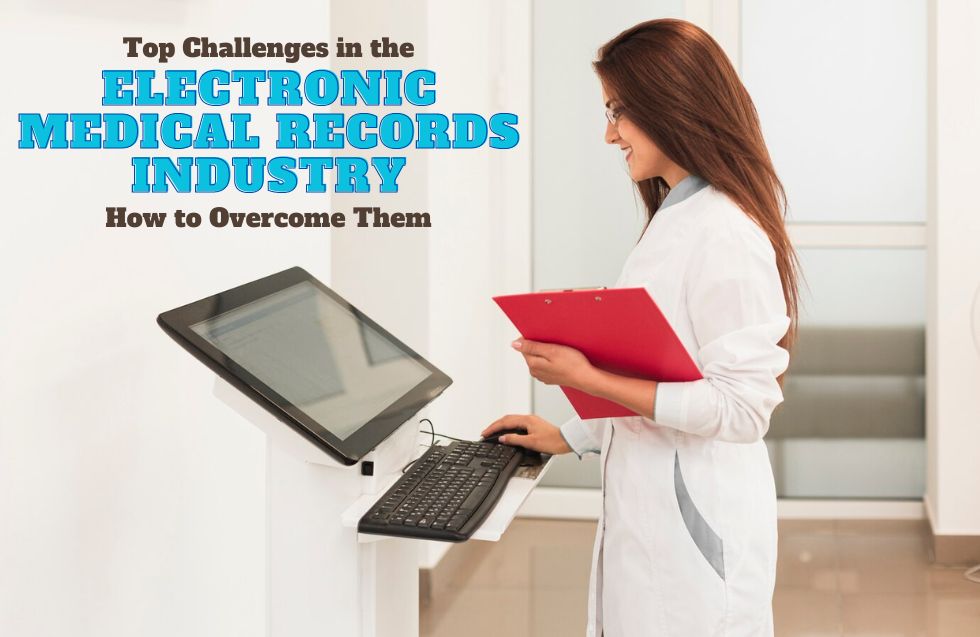The healthcare industry has witnessed a digital transformation over the past decade, and at the heart of this transformation is the Electronic Medical Records (EMR) system. EMRs offer tremendous potential to streamline medical data, improve patient care, and reduce administrative burdens. However, like any technological advancement, EMR systems come with their own set of challenges. Understanding these challenges and implementing strategies to overcome them is key to optimizing their benefits. Let’s explore some of the top challenges in the EMR industry and practical solutions to address them.
1. Data Security and Privacy Concerns
Electronic Medical Records (EMR) contain sensitive personal and medical information, making them prime targets for cyberattacks. Breaches can result in not only loss of patient trust but also severe legal consequences under regulations like HIPAA in the US or GDPR in Europe.
Solution:
- Enhanced Encryption: Use encryption techniques to protect data both in transit and at rest.
- Regular Audits: Conduct regular security audits to identify vulnerabilities.
- Staff Training: Educate healthcare providers on best practices for data protection, including recognizing phishing attempts.
- Multi-factor Authentication (MFA): Ensure that access to EMR systems is secured through multi-factor authentication, preventing unauthorized access.
2. Interoperability Issues
One of the major challenges of Electronic Medical Records (EMR) systems is the lack of interoperability between different systems and healthcare providers. When EMRs are not compatible across platforms, it hampers the seamless sharing of patient data, resulting in fragmented care.
Solution:
- Adoption of Standards: Promote the use of interoperability standards like HL7 and FHIR (Fast Healthcare Interoperability Resources) to ensure that EMR systems can exchange data.
- Cloud-based Solutions: Cloud technology can help integrate Electronic Medical Records (EMR) across different platforms, making data more accessible across healthcare systems.
- Vendor Collaboration: Encourage Electronic Medical Records (EMR) vendors to collaborate on developing APIs and solutions that ensure data flow between different systems.
3. Complexity and Usability Problems
Many healthcare providers find Electronic Medical Records (EMR) systems cumbersome and time-consuming. Poorly designed user interfaces can lead to inefficiencies and even burnout for physicians, who end up spending more time navigating the system than interacting with patients.
Solution:
- User-friendly Design: EMR systems should prioritize intuitive and user-friendly designs with clear workflows that align with clinical practices.
- Customization: Allow providers to customize their interfaces according to their specific needs, reducing unnecessary steps in documentation.
- Regular Feedback: Implement feedback loops to continuously improve the system’s usability based on user input and real-world usage patterns.
4. High Implementation and Maintenance Costs
The initial setup and ongoing maintenance of an Electronic Medical Records (EMR) system can be costly, especially for smaller healthcare providers. These costs include hardware, software, training, and support services, which can be a burden for organizations with limited budgets.
Solution:
- Government Incentives: Take advantage of government programs and incentives, such as the Medicare and Medicaid EHR Incentive Program, that offer financial support for EMR adoption.
- Cloud-based EMR Systems: Consider using cloud-based EMR solutions, which often come at a lower upfront cost and reduce the need for expensive on-premise infrastructure.
- Phased Implementation: Implement the system in stages to spread out costs over time, ensuring manageable financial investment without overwhelming the healthcare practice.
5. Resistance to Change
Healthcare professionals accustomed to paper-based systems may resist switching to EMRs. This resistance can stem from a fear of technology, lack of trust in digital systems, or concerns about the learning curve and disruption to daily routines.
Solution:
- Comprehensive Training Programs: Provide extensive training sessions to ensure staff are comfortable using Electronic Medical Records (EMR) systems. This training should be ongoing to address evolving features and updates.
- Leadership Support: Gain the support of leadership to set a tone that emphasizes the long-term benefits of EMR adoption.
- Gradual Transition: Implement EMRs gradually alongside existing systems before fully transitioning, allowing users to adapt without overwhelming them.
6. Data Entry and Time Constraints
One of the biggest complaints from healthcare providers is that Electronic Medical Records (EMR) increase the time spent on data entry. Physicians and nurses often feel that inputting data into EMR systems takes away from patient care, leading to inefficiency and frustration.
Solution:
- Voice Recognition Technology: Integrate voice-to-text features to allow providers to dictate notes, saving time on manual data entry.
- AI and Automation: Use artificial intelligence (AI) and automation tools to auto-fill repetitive data fields and reduce the time spent on routine tasks.
- Scribe Services: Consider employing medical scribes to handle the data entry portion, freeing up healthcare providers to focus on patient interactions.
7. Regulatory and Compliance Challenges
The healthcare industry is highly regulated, and EMR systems must comply with a complex web of laws, including HIPAA, HITECH, and other regional regulations. Ensuring that EMR systems are compliant while keeping up with changing regulations can be overwhelming for providers.
Solution:
- Regular Compliance Audits: Ensure regular compliance checks to keep the Electronic Medical Records (EMR) system updated with the latest regulations.
- Collaborate with Legal Experts: Work with healthcare legal experts to stay informed about regulatory changes and ensure that EMR practices are always compliant.
- Built-in Compliance Tools: Choose EMR systems that come with built-in compliance monitoring features, which alert users to any potential violations or issues.
8. Patient Accessibility Issues
While EMRs are designed to enhance care, many patients find it difficult to access their medical records or understand how to use patient portals. This can limit the benefits of digital health records, especially for older adults or those who are less familiar with technology.
Solution:
- Simplified Patient Portals: Ensure that patient portals are user-friendly, with easy navigation and language settings that cater to diverse user bases.
- Education Initiatives: Provide educational materials, including step-by-step guides and videos, to help patients learn how to access and use their medical records online.
- Mobile Accessibility: Ensure that EMR systems are mobile-friendly, allowing patients to access their health records on smartphones and tablets with ease.
Conclusion
The EMR industry faces several challenges that can hinder its full potential in improving healthcare delivery. However, by addressing issues related to data security, interoperability, usability, and cost, as well as fostering a culture of acceptance and compliance, healthcare providers can overcome these obstacles. The key to success lies in implementing the right technological solutions, providing adequate training, and embracing a patient-centered approach to EMR adoption.
By staying proactive and agile, the healthcare industry can continue to evolve toward more efficient, accessible, and patient-friendly care through the effective use of EMR systems












